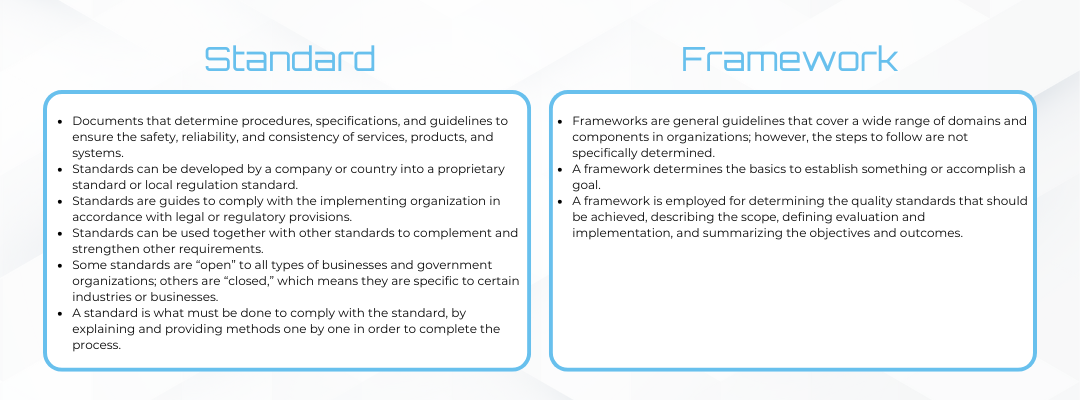
Standards and Frameworks in Cybersecurity
Introduction
“Standards” and “Frameworks” are important definitions in the cybersecurity legislative, regulative and policy space. While the terms are often used together, it is imperative to highlight the differences of their concepts to ensure a shared understanding of the scope of discussion, focus areas and information sharing.
Difference of Standards and Frameworks
Cybersecurity standards and frameworks both help organizations protect their information, but they serve different purposes.
- Standards are specific guidelines with detailed steps for safeguarding the confidentiality, integrity and availability of data, setting rules and procedures that ensure systems are secure and consistent and risks are mitigated. They can be tailored to one company or developed as industry or national standards, like ISO 27001. Some apply across sectors, while others are specific to certain fields.
- Frameworks, on the other hand, are more flexible. They guide organizations on setting goals and improving security without outlining exact steps to be taken to reach such goals. Frameworks help define broad areas, such as threat detection and response, but let organizations decide how best to approach each. An example is the NIST Cybersecurity Framework, which covers key areas like “Protect” and “Recover” (five functions) but leaves the details open to interpretation.
Characteristics of Standards and Frameworks
Standards and frameworks often work together. A company might use a framework to outline its security goals, then rely on standards for specific processes. Standards are essential for regulatory compliance, while frameworks allow for adaptable security strategies.
Table 1. Difference between a standard and a framework. [1]

Conclusion
In conclusion cybersecurity standards, frameworks and regulations are essential for companies building a comprehensive security strategy. Standards offer specific guidelines for constant protection while cybersecurity frameworks provide more flexible solutions. Regulations enforce rules which an organization must follow in order to operate in certain districts. By creating a policy based on regulations and well-known standards or frameworks, companies ensure their security, increasing their trustworthiness.
To learn more about how to validate your existing Cybersecurity Standards and Frameworks through training intiatives, visit our Strategic Cybersecurity Exercises page.
[1] Author: H. Taherdoost (https://www.mdpi.com/2079-9292/11/14/2181)
